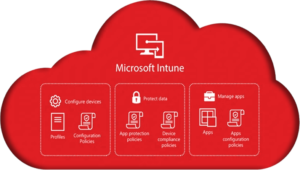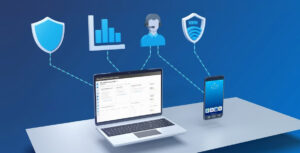Leveraging Windows 11 Management
Posted on 1 Jun 2022
Part 1 – Migration Into Windows 11
Introduction
This series will go through all the areas in which we can leverage Windows 11 management especially when we consider it on a cloud and security perspective.
Even though we currently have the Windows 10 build versions still running on a regular interval release, at some point we will start to see the demand and impact (if not already) to begin the migration transition into Windows 11.
Here we hope to explain how the transition between Windows 10 and Windows 11 can be done and how the management of Windows 11 going forward can have interesting capabilities unfold.
The first part will layout exactly what we want to achieve throughout the series on leveraging Windows 11 and will focus on the specific areas laid out in this splash page of a first part for the new series.
The Windows 11 adoption and migration as many types of new OS migrations don’t always start at the fastest of paces so we hope to outline what those possible curve balls and areas of interest are to get things moving.
Transition to Windows 11
Now for those who are normally familiar with the structures of my series I was always tend to go through them by not providing a step by step process on how to accomplish something but look at the bigger picture of things which are around the design and strategy of topics and this area will not be any different.
There are of course many articles and blogs which go through how to upgrade from Windows 10 to Windows 11 so we don’t wish to repeat the instructional steps. But, here we want to analyse various scenarios and then also outline the benefits of moving into Windows 11.
Windows 11 Readiness Assessment
This is perhaps the most important area of all. When it comes to even going for the upgrade there are various areas to assess when it comes to readiness. There are of course the official documentation from Microsoft as well as tools which can run a check across your device to see what is outstanding.
But what we want to account for in this case is how we will be able to not only move over to the operating system but more on the basis of how we can have the device ready to be moved into Modern Management for its overall lifecycle management.
Now when I think of any transitions these are the areas I think of and of course not limited to
- Hardware – Fundamentals of any type of migration
- Software – The compatibility of applications which are on the device. You may assume some applications will just automatically work on Windows 11 but may not always be the case. Especially when we take into account bespoke applications or older Windows 10 builds.
- Windows 10 Build Versions – Understanding the levels these are on can greatly help assess the criticality of the migration.
- Testing Phases – Before we sign-off on any mass movement of migration we need baselines to how this process will go.
- Method of Migration – The method is also greatly important. But the above sections would indeed help and shape the decision making on what would be the best method for the device/s
These are good areas to focus on when we cover on the next part of the series and how we can manage expectations over everything.
From Configuration Manager
Managing devices within SCCM can make the assessments of your estate much easier, however the accuracy is dependant on how well maintained your SCCM environment is.
Here with this solution we have various methods of readiness assessment as well as having the options to upgrade the operating system to Windows 11 from Task Sequences and as well as the feature update upgrades as well. Adding the element of where co-management is also at play here this can indeed make the migration process a lot more interesting and is definitely a huge enough subject for it to have its own dedicated part within the series to really go through this in much finer detail.
From Intune
Here is the scenario we ideally would love to be at where all of our devices are managed from just Intune without the complications of the co-management configuration. It might not necessarily seem as a big deal with having Intune + SCCM together managing devices for this kind of migration, but it can if you were to take into account the level of which the SCCM environment is at build wise and then also looking at the Windows 10 levels that the clients are on as well.
Multiple areas of focus can cause the transition period to be much finer in detail moving forward, and we do have the ability to upgrade machines to Windows 11 from Intune too but there are still its own areas of consideration which we need to face.
Next on Part 2
The second part will be focusing on strategies on how we will look at Windows 11 readiness. This will take us all through how we would identify a group of machines if not all of them to understand the benefits and the impacts of the transitioning and then the leveraging of the Windows 11 new features going forward.





